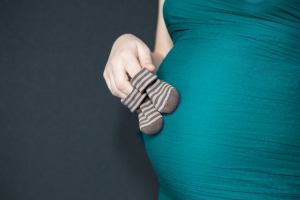Giving birth is a miracle of life. But the process leading to that miracle isn’t always paved with roses. Come to think of it, roses do have thorns, which explains why going into labor can be a painful experience for some women. But is epidural anesthesia the ideal method for pain relief? It comes with risks and side-effects, after all.
More than 50% of women giving birth ask for epidural anesthesia to ease the pain that comes during labor. Pain management is part of the process, and epidural is commonly part of it. But delivering a baby naturally doesn’t always mean using anesthesia.
What is an epidural?
An epidural is a form of local/regional anesthesia that helps ease the pain in a particular region of the body. Instead of a total lack of feeling, however, it provides pain relief, making it more of an analgesia rather than anesthesia. What an epidural does is block the nerve impulses found in the lower spine segments, resulting in a decreased sensation in the lower half of the body.
It is usually delivered by a needle injected into an area where the spinal cord is located. Most of the time, a topical anesthesia is used, before the needle is inserted. Once the needle is in place, a catheter or small tube is then threaded through it and into the epidural space.
Once in place, the needle is then removed, leaving only a catheter or a tube in position. This is where medication is delivered either through continuous infusion or periodic injections.
There are two types of epidural anesthetics: regular epidural and the combined spinal epidural (CSE) or walking epidural. The former is a combination of narcotics and anesthesia, while the latter involves an initial dose of narcotics, anesthetic or a combination of the two. Administration is also different, in such a way that mobility is not hampered and an additional epidural can be delivered at any time.
Benefits of epidural anesthesia
Keeps you awake and conscious while giving birth
Unlike general anesthesia, an epidural keeps you conscious during labor and the entire time you deliver your baby. This means you get to experience giving birth and the miracle surrounding it. This also makes it easier to monitor your condition, since you are aware of what’s going on with your body and you can reply to the doctor’s questions.
A more positive birth experience
The discomfort and pain of childbirth could put off women from pregnancy for good. But when discomfort is reduced, giving birth would not be such a painful experience that you don’t want to revisit.
Help you rest and relax
It is highly recommended that you learn other mechanisms for pain relief, but if none of them works, an epidural can be an ideal solution. It will not only ease the pain, but also helps you deal with fatigue, irritability and exhaustion. If labor is prolonged, you will be able to rest, relax and refocus.
Effective pain management during C-section
When an epidural is already in place, it will be easier to deliver pain relief if you give birth by cesarean, and during recovery. Anesthesia will just be administered through the tube or catheter placed on the epidural area.
Side effects of epidural anesthesia
As a medication that falls into a class of local anesthetics, expect some side effects from epidurals, most of which are minor.
Minor but annoying side effects:
- Backache
- Ringing in the ears
- Nausea
- Difficulty urinating due to numb abdomen
- Soreness at the site where the epidural needle is injected
Risks of epidural anesthesia
Drop in blood pressure
Epidurals can cause a sudden drop in blood pressure, which could set off a cascade of interventions that include continuous fetal monitoring to ensure there’s adequate blood flow to the baby, and treatment with oxygen, medications and IV fluids.
Severe headache
This can be caused by leaking spinal fluids. An injection of blood into the epidural space, also called the blood patch procedure, may be performed if symptoms persist. Less than 1% of women may experience a severe headache.
Labor will slow down or stop
When an epidural is in place, lying in one position should be avoided, as this can sometimes cause labor to slow down or stop altogether. To minimize the risk, you should alternate sides while lying in bed, and continue to monitor a baby’s heart rate for any changes.
Difficulty pushing
Some women find pushing more difficult with an epidural, requiring the need for additional medication or intervention. In some cases, the use of forceps or a switch from natural birth to C-section could happen as a consequence.
Numbness
More like a minor inconvenience, feeling numb on the lower half of your body could happen a few hours after giving birth. If you need to walk for whatever reason, you will need assistance to do so.
Permanent nerve damage
In some rare cases, permanent nerve damage can occur in the area where the catheter was inserted. This may be due to direct injury caused by the needle or the catheter itself, infection, an inadequate blood supply, hematoma or human error. In some exceptionally rare and unfortunate events, an anesthetist could administer the wrong drug.
Fetal complications
Studies suggest that epidurals can have an effect on the baby, such as fetal malpositioning, respiratory depression, and an increase in heart rate variability, requiring the use of a vacuum or forceps or delivery through cesarean or episiotomy. It is also believed that the anesthesia can cause some babies to have trouble “latching on,” making breastfeeding difficult.
Weighing in on the benefits, risks and side effects, it is vital that you talk to your doctor about the safest and less painful birth plan. Find out if an epidural can be avoided or not, and if they have other forms of intervention in mind.
This is especially true if an epidural is not an option because you use blood thinners, have a back infection, have low platelet counts, the epidural space can’t be located, you’re not at least 4 cm dilated, and are in shock or hemorrhaging.



